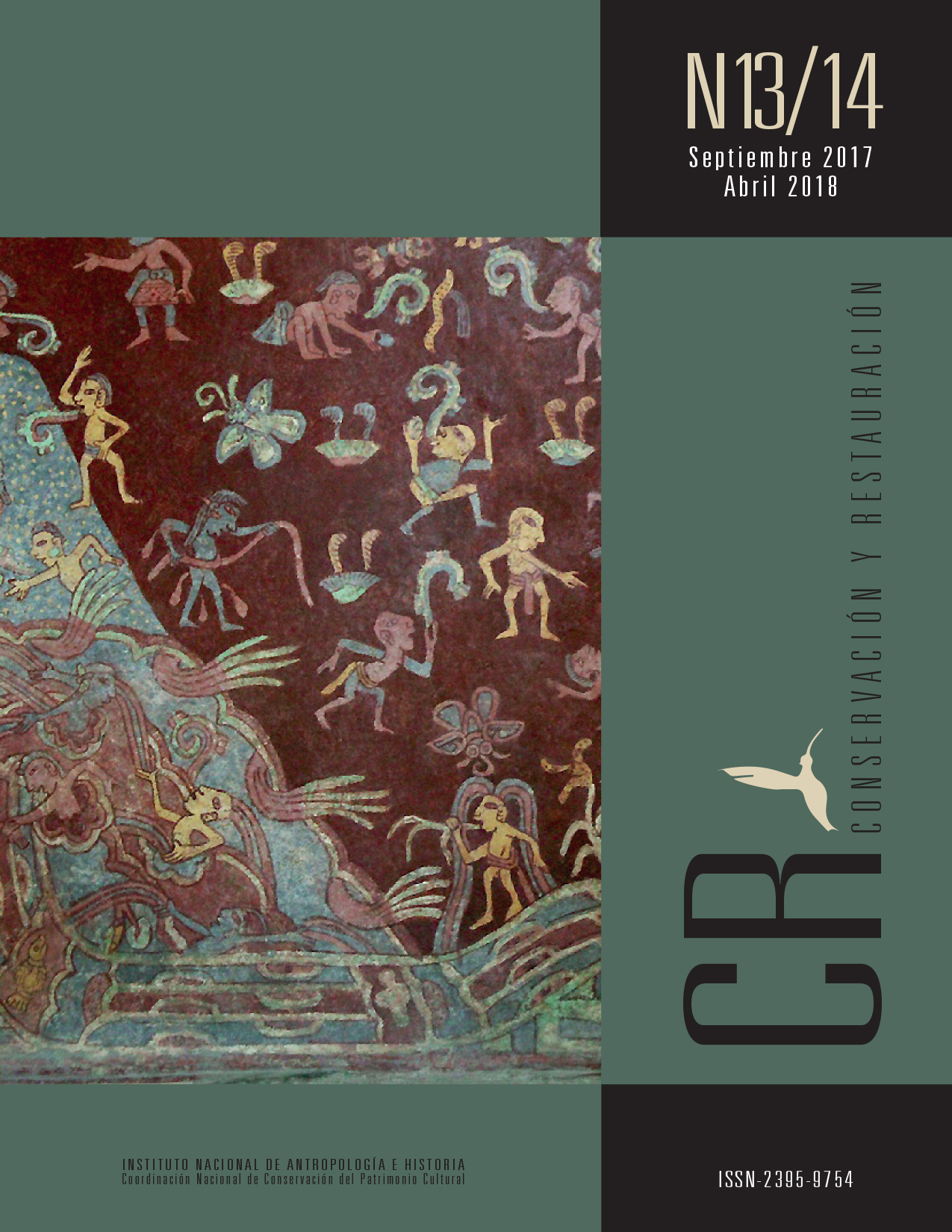Experiencias de participación comunitaria para la difusión de la conservación del patrimonio arqueológico en la zona arqueológica de Ek Balam
Published 2018-09-25
Keywords
- community,
- social participation,
- archeological heritage
How to Cite
Abstract
The goal of this article is re ecting on the importance of communicating the role of archaeological conservation in order to create community engagement. It also discusses current strategies employed in the archaeological site of Ek Balam to promote positive involvement of local communities in conservation, preservation, and diverse uses of archaeological heritage. It also evaluates methods that can be useful to create or change “value” for several stakeholders, such as visitors, tourist agents, local authorities, local residents, and the strategies that help creating a sense of place, social bonding with heritage, and bolstering the link between modern Maya identity to the ancient Maya past represented by the materiality of the archaeological heritage. I re ect on what Appadurai (1996) calls “ethnolandscape” as the human group that constitutes the changing world, and Parks (2010) concept of “archaeolandscape” to explain the interaction between the physical and ideological levels overlapping in past and present conditions, interacting with different communities, and how creating agency may contribute in developing community engagement and appropriation.
Downloads
References
Ashworth, G. J. (2011) “Preservation, conservation and heritage: Approaches to the past in the present through the built environment”, Asian anthropology (10): 1-18.
Castañeda, Quetzil E. (1996) In the Museum of Maya Culture: touring Chichen Itza, Minneapolis, London, University of Minnesota Press.
Castañeda, Quetzil E. (2002) Ethics and intervention in Yucatec Maya archaeology: past and present. (Documento electrónico) disponible en: <http://www.ethical.arts.ubc.ca/Castañeda.html> [Consultado el 14 de diciembre 2017].
Castañeda, Quetzil E. (2004) “We are not Indigenous! The Maya Identity of Yucatan, an Introduction”, The journal of Latin American anthropology 9 (1): 36-63.
Castañeda, Quetzil E. (2009) “The 'past' as transcultural space: using ethnographic installation in the study of archaeology”, Public archaeology: archaeological ethnographies 8 (2-3): 262-282.
Daes, Erica-Irene A. (2008) “Standard-setting activities: evolution of standards concerning the rights of indigenous peoples - on the concept of “indigenous people”, en: Christian Erni (ed.), The concept of indigenous peoples in Asia: a resource book, Copenhagen International Work Group for Indigenous Affairs (IWGIA), document 123, pp. 29-50.
Funari, Pedro Paulo A. (2001) “Destruction and conservation of cultural property in Brazil: academic and practical challenges”, en: Robert Layton et al. (eds.) Destruction and conservation of cultural property, London, One World Archaeology, Routledge, pp. 93-101.
Latour, Bruno (2005) Reassembling the social: an introduction to actor network theory, Oxford, Oxford University Press.
McAnany, Patricia and Shoshaunna Parks (2012) “Casualties of heritage distancing”, Current anthropology 53 (1): 80-107.
Merlan, Francesca (2009) “Indigeneity: global and local”, Current anthropology (50): 303-333.
Parks, Shoshaunna (2009) Archaeological ethics and the struggle for community legitimacy in the Maya archaeoscape. PhD dissertation, Boston, Department of archaeology, Boston University.
Parks, Shoshaunna and Patricia A. McAnany (2007) “Reclaiming Maya ancestry”, en: Bruce T. Martin (ed.), Look close, see far: a cultural portrait of the Maya, New York, George Braziller, pp. 17-26.
Pi-Sunyer, Oriol and R. Brooke Thomas (2015) “Tourism and the transformation of daily life along the riviera Maya of Quintana Roo, Mexico”, The journal of Latin America and Caribbean anthropology. 20 (1): 87-109.
Salazar Peralta, Ana María (2002) “El uso social del patrimonio cultural: el dilema de la ciudadanización”, Revista de arqueología americana (21): 107-121.
Salazar Peralta, Ana María (2006) “La democracia cultural y los movimientos patrimonialistas en México”, Cuicuilco 13 (38): 78-88.
Turnbridge, J. E. and Gregory John Asheworth (1994) Dissonant heritage. THe management of the past as a resource in con ict, London, John Wiley and Sons.
Valle Escalante, Emilio del (2006) “Maya nationalism and political decolonization in Guatemala: Luis de Lión and El Tiempo Principia en Xibalba”, Latin American and Caribbean studies (1): 203-213.
Wainwright, Joel (2008) Decolonizing development: colonial power and the Maya, Malden, Blackwell.
Xiutecutli, Nezahualcoyotl (2015) “The role of migrations in creating identities among the Mesoamerican peoples from Pre-Hispanic to modern times”, en: David S. Anderson, Dylan J. Clark, and J. Heath Anderson (eds.), Archaeological Papers of the American Anthropological Association, special issue: Constructing legacies of Mesoamerica: archaeological practice and the politics of heritage in and beyond Mexico 25 (1): 38-49.

